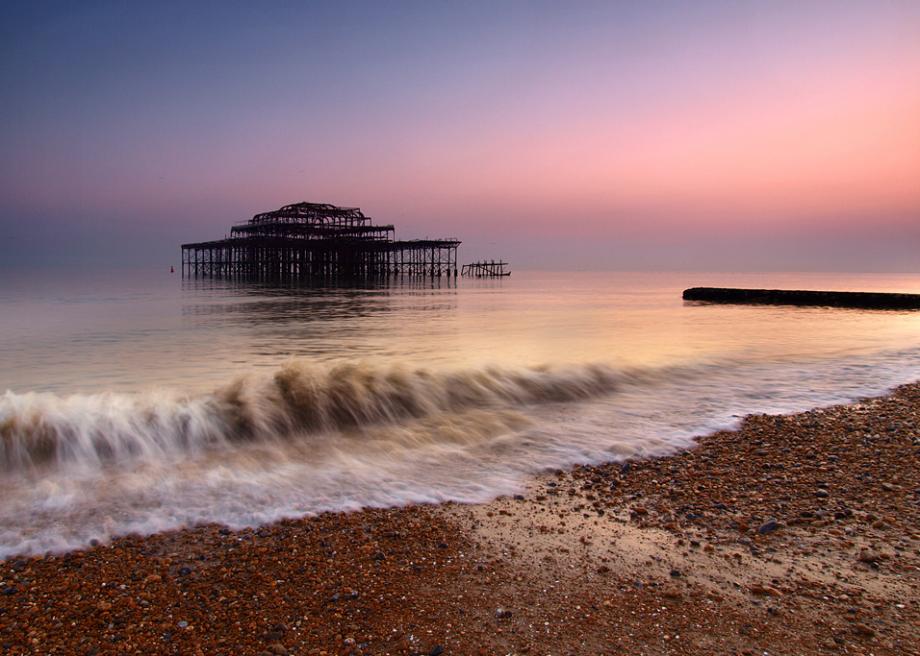The Skeleton of the West Pier
Atlas Obscura on Slate is a blog about the world’s hidden wonders. Like us on Facebook and Tumblr, or follow us on Twitter.
The West Pier in Brighton, England, was the second of three major piers that have jutted out to sea from the city's shoreline. Much like its predecessor, the Chain Pier, it was destroyed through years of neglect, storms, and fire. However, unlike the first pier, the skeleton of the West Pier can still be seen just offshore.
Built in 1866 as an amusement attraction—as opposed to a shipping or passenger landing—the West Pier seemed at the time like the perfect way to add the glamour and fun the Chain Pier had lacked. The West Pier was more than 1,000 feet long and built with a series of small shacks and wind-blocks for visitors gazing out to sea.
As the years went by, the pier continued to grow, adding a large concert hall at its far end as well as some entertainment buildings along its length. During the early 20th century, the pier had grown into a seaside resort attraction where one could imagine a Gatsby strolling with his Daisy.
The West Pier had fallen into disrepair by the 1970s, and the mounting maintenance costs made it a wholly unattractive candidate for renovation. In 1975 the pier was closed. The structure changed hands among a number of owners, each making sure that it wasn't demolished, but not improving it either. Tours of the empty structure were held despite mounting damage from storms, until wind tore the end of the pier from the mainland in 2002. The next year the water-locked concert hall caught fire, gutting the entire structure right down to its metal bones.
Since then, the eerie skeleton of the pier's glory days has sat rotting just offshore. In 2014 another storm tore away a part of the remains, endangering the remaining structure even more. But for the time being, the Victorian steel bones of a once glorious attraction will not let themselves be forgotten.
More wonders to explore:

